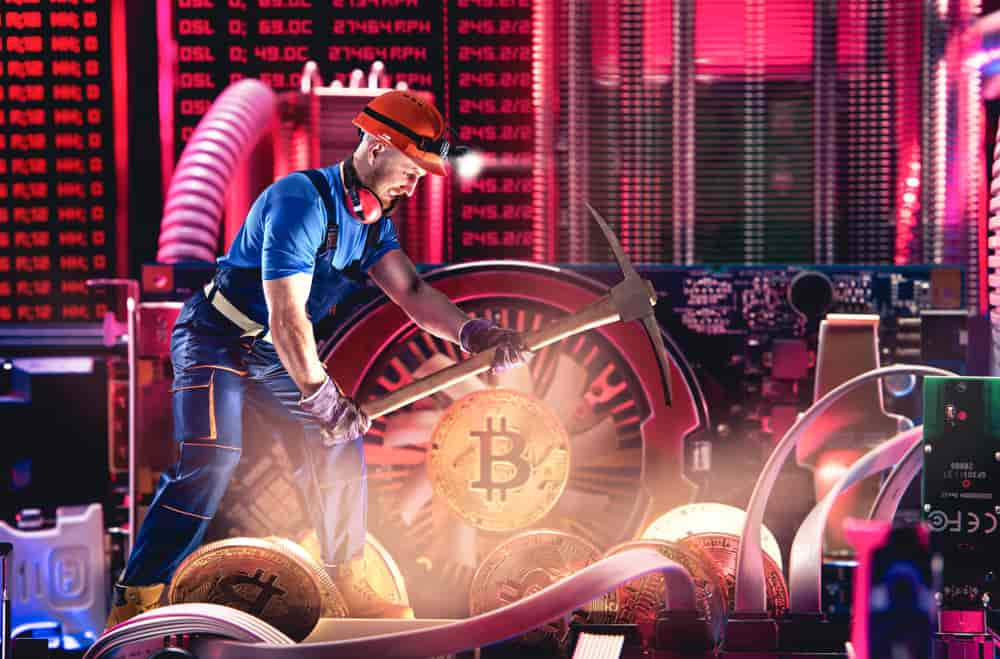Engage with the complex yet fascinating world of cryptocurrency, as we delve deep into the intricacies of Bitcoin mining. An emerging concern hovering over Bitcoin enthusiasts revolves around the influence of few mining pools, particularly the disconcerting dominance of merely two, on the decentralization of the network. With extensive data-backed research and expert insights, we aim to shed light on this subtle shift and discuss what it implies for the future of Bitcoin.
# Bitcoin Mining: A deep-dive into the Dominance of two Mining Pools
Data insights from mempool.space, a leading Bitcoin data aggregator and block explorer, uncovers an interesting trend in Bitcoin mining over the past three years. The data stems directly from an observer node and ranks Bitcoin mining pools according to the number of blocks mined by each in comparison to the total blocks mined within a specific period.
Analyzing data from March 28, 2025, we see that the lion’s share of Bitcoin-mined blocks is attributed to just two mining pools. Foundry USA and AntPool, with 46,076 (28.72%) and 34,365 blocks (21.42%) respectively, out of a total 160,432 blocks mined, have a combined dominance of 56.37%.
## Why does it matter to have only two mining pools above the 51% threshold?
As delineated by Satoshi Nakamoto’s whitepaper, Bitcoin’s core value lies in reaching a consensus over the blockchain state via decentralization. Bitcoin’s decentralization underpins through the process of mining. During this process, miners (special nodes) deploy computational power to unlock cryptographic hashes and discover blocks.
On discovering, the miner can collect newly minted Bitcoin units, known as the ‘coinbase’. They can also include transactions in the blocks and collect respective fees. Consequently, they have to broadcast the discovered block, inclusive of their coinbase transaction, and all third-party transactions. Other nodes, following Satoshi’s design, will then follow the longest chain, implying the chain with the most proof-of-work or added blocks.
The issue arises when the so-called 51% attack raises its head. This hypothetical scenario allows bad actors to create double spends if they have enough control over the mined blocks. Bitcoin mining pools are also capable of censoring transactions from being broadcasted.
## Bitcoin mining pools and not individual miners or nodes
Interestingly, each mining pool is supposedly a collection of different miners. The pool coordinator bears the responsibility of setting the block, broadcasting it to the network, collecting rewards, and optionally, distributing it to their miners.
However, the relevance of mining pools surpasses individual miners or nodes when assessing the current state of blockchain consensus decentralization. While miners or nodes can migrate, it might be too late to avoid a hypothetical attack.
There have been cases where transaction fees were withheld from AntPool miners, instead of being distributed as expected. In addition, AntPool, the second-largest mining pool, seems to have a robust influence on five other Bitcoin mining pools.
In short, the much-appreciated decentralization of Bitcoin may be facing a crossroads due to the influence of the economies of scale on the dominance of large miners. Increased block discovery by a mining pool comes with more rewards from freshly issued Bitcoin and transaction fees, leading to larger infrastructure investments, easier access to capital, and an amplified dominance over future block mining.
## Frequently Asked Questions
How does a higher block discovery rate benefit a mining pool?
A higher block discovery rate means that a mining pool gets more rewards from newly issued Bitcoin and transaction fees. This, in turn, allows them to invest more substantially in infrastructure, access capital more easily, and potentially increase their dominance over future block mining.
What does ‘following the longer chain’ mean in Bitcoin mining?
When a new block is discovered and broadcasted, other nodes in the Bitcoin network ‘follow the longer chain’. This means that they follow the chain with the most proof of work attached to it, or simply the chain with the most added blocks. This is an integral part of the design established by Satoshi Nakamoto.
Should the dominance of two mining pools over Bitcoin mining be a concern?
Yes, it should be a concern. The dominance of just two mining pools may lead to a potential centralization of the network, thereby contradicting the fundamental value proposition of Bitcoin – decentralization. It also leaves the network vulnerable to potential risks like the 51% attack.
What is the 51% attack in the context of Bitcoin mining?
The 51% attack is a theoretical scenario in which if a single entity controls over 51% of the network’s computational power, they have the power to double-spend, which could undermine the integrity of the blockchain.

